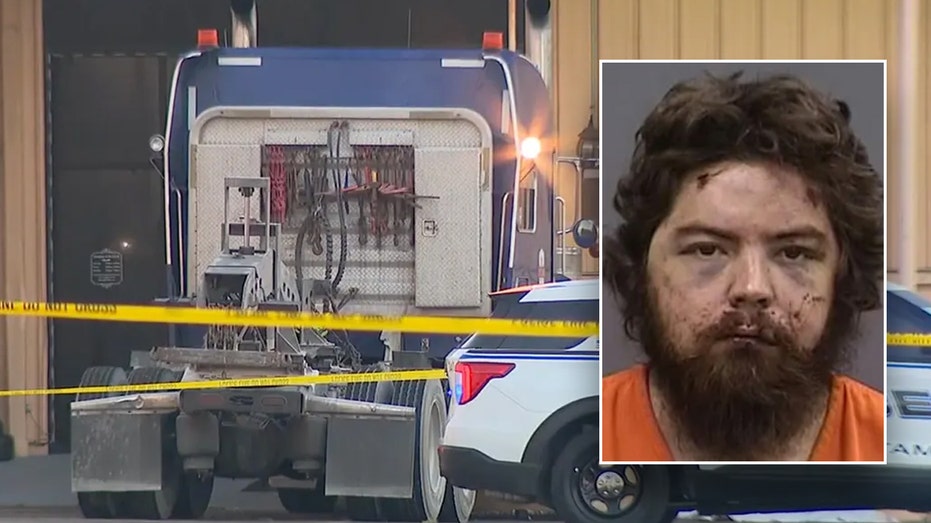You won't believe how Biden-Harris team responded when drones buzzed sensitive US military bases
The swarms started on Dec. 7, 2023. Drones, some as large as 20 feet long, flew at night over the Air Combat Command headquarters with its squadrons of advanced F-22 Raptor fighters.

When a sophisticated Chinese spy balloon floated over America in early 2023, lawmakers and the public were outraged at the Biden-Harris administration’s passivity and initial inclination to keep it quiet – only acknowledging the balloon after two civilian photographers forced their hand.
Now, the Wall Street Journal has broken news on an even more stupendous U.S. national security breach, reporting that drones flew over a sensitive nuclear weapons testing facility for three days last October and then, two months later, flew over Langley Air Force Base in Virginia for 17 straight nights while the Biden White House, and the military officers it promoted, dawdled and argued over what to do about it.
The swarms started on Dec. 7, 2023. Drones, some as large as 20 feet long, flew at night over the Air Combat Command headquarters with its squadrons of advanced F-22 Raptor fighters.
As shown almost daily in Ukraine and Russia, those drones might have destroyed years’ worth of combat aircraft production. The drones also came close to the world’s largest naval port in Norfolk, and other key national security installations, including Navy SEAL Team Six’s base.
UNKNOWN DRONE FLEET BREACHED US MILITARY BASE AIRSPACE IN VIRGINIA FOR 17 STRAIGHT DAYS: REPORT
But, instead of acting against the drones that violated U.S. military airspace, the military and civilian chain of command was frozen in indecision.
The base commander had the authority to disrupt or destroy the drones under Department of Defense directives and classified rules of engagement, which grant the commander the necessary authority to act swiftly without needing approval from external agencies when an imminent threat is posed.
Instead, in the zero-defect, zero-risk bureaucracy much of our military brass has settled into, the drone swarm was reported to the National Military Command Center. Then a report went to the White House Situation Room. President Biden heard about it in his daily briefing. This likely happened by Friday, Dec. 8. The drones operated unimpeded for 15 more nights – and then they stopped.
But, instead of ordering the military to protect its sensitive airspace and exercise the authority it already has, Homeland Security adviser Elizabeth Sherwood-Randall convened brainstorming sessions in the White House. Every suggestion – jamming, directed energy weapons or using nets – were all shot down as too risky or not being an authorized use of force.
BIDEN SAYING 'DON'T' AND OTHER THREATS SEEMINGLY FAIL TO DETER IRAN AS MORE US MIDEAST BASES HIT
In the Oct. 12 Wall Street Journal piece exposing the drone fiasco, this excuse for inaction was proffered, "Federal law prohibits the military from shooting down drones near military bases in the U.S. unless they pose an imminent threat. Aerial snooping doesn’t qualify, though some lawmakers hope to give the military greater leeway."
But the law cited, the Preventing Emerging Threats Act of 2018, doesn’t apply to military bases – and certainly, no military commander would look outside his chain of command to seek approval from the secretary of Homeland Security, the attorney general or Transportation Secretary Pete Buttigieg’s FAA.
The blame-casting and responsibility-shirking reveal a dangerous pattern of hesitation and risk-averse decision-making. The military must be expected to defend its installations on American soil. Americans expect their military leaders to have a warrior mindset, not a bureaucratic outlook.
The inaction contrasts sharply with historical examples of decisive military responses. For instance, in the early hours of Dec. 7, 1941, the commander of the USS Ward, a destroyer operating outside of Pearl Harbor, didn’t hesitate when it detected a Japanese midget submarine approaching the naval base.
CLICK HERE FOR MORE FOX NEWS OPINION
The Ward fired at and depth-charged the Japanese submarine, sinking it an hour before Japan’s surprise attack on Pearl Harbor. (The Ward was sunk exactly three years to the day later by a Japanese kamikaze.) This pre-emptive action reflects a different military ethos – today, such an action would be met with endless meetings in the White House and arguments over legal authority to do anything about it.
The recurring drone incidents at Langley betray a military increasingly entangled in bureaucratic caution. Despite possessing overwhelming technological superiority, the military’s passivity points to a deeper issue: a culture where making the "wrong" decision is worse than inaction.
The "zero-defect mentality" discourages initiative, with leaders fearing the career consequences of engaging a target over restricted airspace that may turn out to be non-hostile.
With drone swarms capable of causing devastating damage to aircraft, infrastructure or personnel within minutes, the military’s paralysis in responding represents a failure to adapt to evolving aerial threats – and a deeper cultural problem.
Should former President Trump return to office in January, one of his first priorities should be to clear up any confusion about the military’s ability to defend American airspace and to respond to threats. And for any senior officers unwilling or incapable of such action, immediately and systematically replacing them with those who will act.


